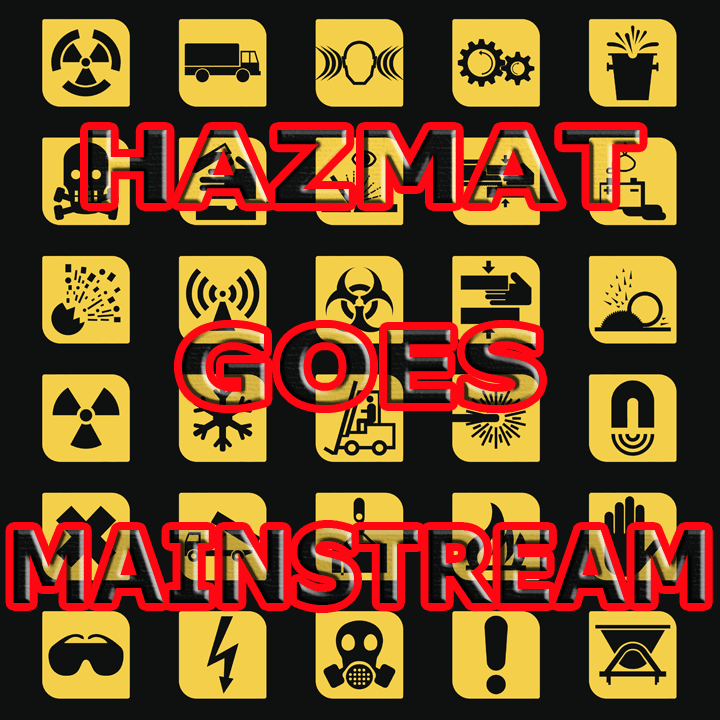
A recent issue
of the magazine DER SPIEGEL featured a report spotlighting a
German manufacturer of bonding and glue products currently exploring opportunities
in the yet largely undiscovered African market.
The company has deployed a binational, multilingual
African-German specialist, taking advantage of the fact that German engineered
products are usually held in high regard in Africa.
Hazmat Goes Mainstream
This would hardly seem a story for
FT and its readers if not for the revealing glimpse at the
driving industry issue of transport of hazardous materials in a popular
mainstream market magazine.
DER SPIEGEL writes
of the sales representative for the company (identified by name and location)
who travels on airlines identified for itineraries in various African
locations, carrying not only sales brochures but also with a considerable
amount of demonstration objects and product samples as passenger baggage.
These product samples, according to the
report, include various specific glues and bonding products as well as
brake cleaner.
Brake Cleaner
Is DG
Brake cleaner usually takes the form of
a flammable aerosol spray (division 2.1) and is not permitted within passenger’s
baggage under ICAO and IATA regulations.
Likewise, bonding products and glues will
meet the classification criteria of various classes, predominantly in
class 3 and class 9; and the carriage of dangerous goods (or hazardous
materials) not for the personal use of the passenger (such as demonstration
materials, exhibition models, product samples, or giveaways) is expressly
forbidden aboard passenger aircraft.
Provisions forbidding this kind of carry
on in any form including passenger luggage are clearly spelled out in
subsection 2.3 of the IATA Dangerous Goods Regulations, subsection 8-1-1
of the ICAO Technical Instructions for the Safe Transport of Dangerous
Goods by Air (or 49 CFR §175.10 domestically within the U.S.).
Back To Spiegel
The glue producer, as the DER
SPIEGEL story points out, was quite concerned about a business
requirement that dictated a batch of 50 aerosol cans for Angola be marked
in the official Angolan language (Portuguese), but seemed utterly unperturbed,
or worse, unaware of the vital Dangerous Goods-/Hazardous Materials-related
regulatory requirements, not to mention the terrible dangers at hand in
carrying these samples on board as baggage while traveling.
Under applicable national and international
legislation, it is the responsibility of the bonding materials manufacturer
to provide Dangerous goods-/Hazardous materials-related information and
possibly training.
It was also pointed out that the sales engineer
is a frequent traveler on African itineraries. So the DER
SPIEGEL article is correct in questioning the safety- and
security-related measures not only on the African airports, but also the
European transit hubs.
There was also some coverage alleging bribes
involving customs officials in Lagos, Nigeria.
But taking a wider view, the underlying problem here is far from being
a specifically German issue.
Baggage Fire,
Corrosives & Lithium
On January 28th, 2014, a passenger’s
bag checked for flight PG931 from Bangkok, Thailand, to Phnom Penh, Cambodia,
caught fire on the conveyor belt—fortunately before it was loaded
onto the aircraft.
The bag in question contained fertilizer
samples in division 4.1.
On May 29th, 2015, the U.S. FAA proposed
a $70,050 civil penalty against the University of Wisconsin-Madison for
allegedly violating Hazardous Materials Regulations.
A university official traveling on behalf
of the university had 1.89 liters of ethyl alcohol (a flammable liquid)
and 120 milliliters of Epofix hardener (a corrosive material) packed in
his baggage, having created an undeclared hazardous material shipment.
Similar incidents have occurred, including
the unauthorized shipping of experimental (unauthorized) Lithium batteries
for “research,” the presence of aerosol spray paint for the
purpose of repainting helmets in the baggage of an university’s
football team trainer, and the carriage of large amount of various chemicals
by people on business travel for various purposes.
Add to that line up illegal fireworks, ammunition,
acids, paints, and almost any chemical product imaginable that have been
discovered during routine checks of passenger baggage.
How Things
Add Up
In Germany, air transport watchdog LBA (Luftfahrtbundesamt)
reported 58,822 dangerous goods-related incidents in 2014 (which include
both cargo and passenger-related incidents).
Screeners
Ability & Luck
As security screeners more often than not
have not been trained in full compliance with the requirements of the
ICAO TI and IATA DGR pertaining to Dangerous Goods/Hazardous Materials,
the ability of these screeners to detect undeclared or hidden dangerous
goods within passenger’s baggage is naturally limited.
A fact often overlooked is that while screeners
fulfill a vital security function by working assiduously to assure safety-related
requirements are met, at the end of the day success or failure can also
depend on sheer luck.
Jens
|





